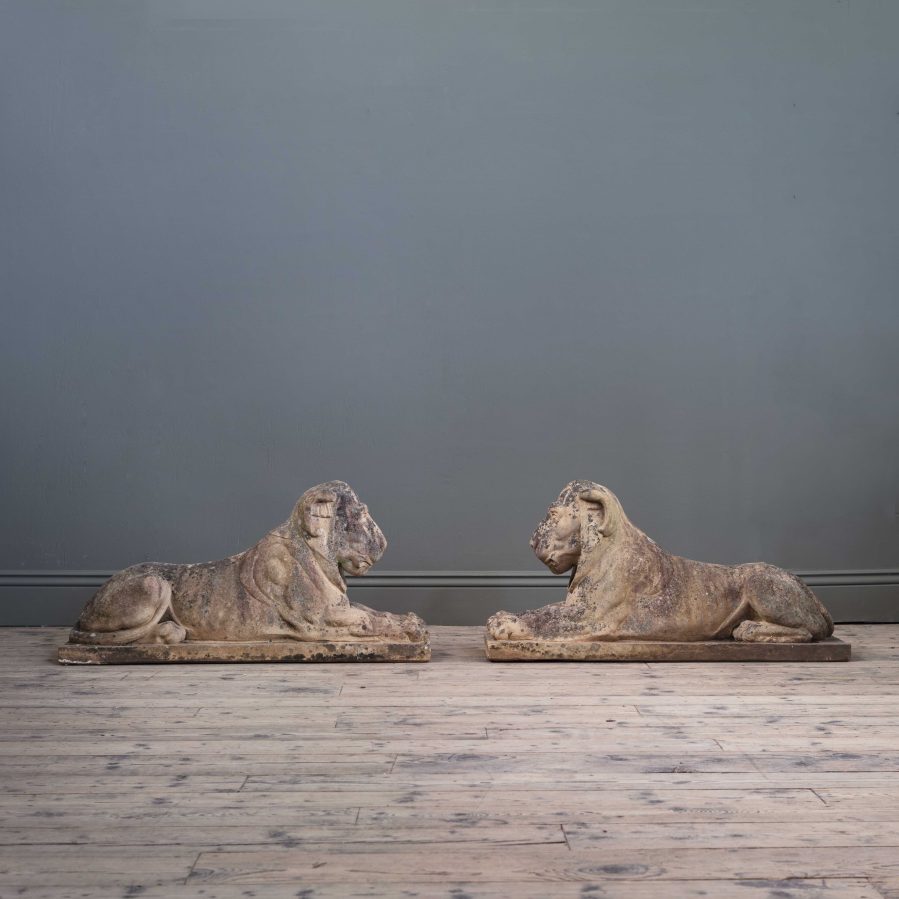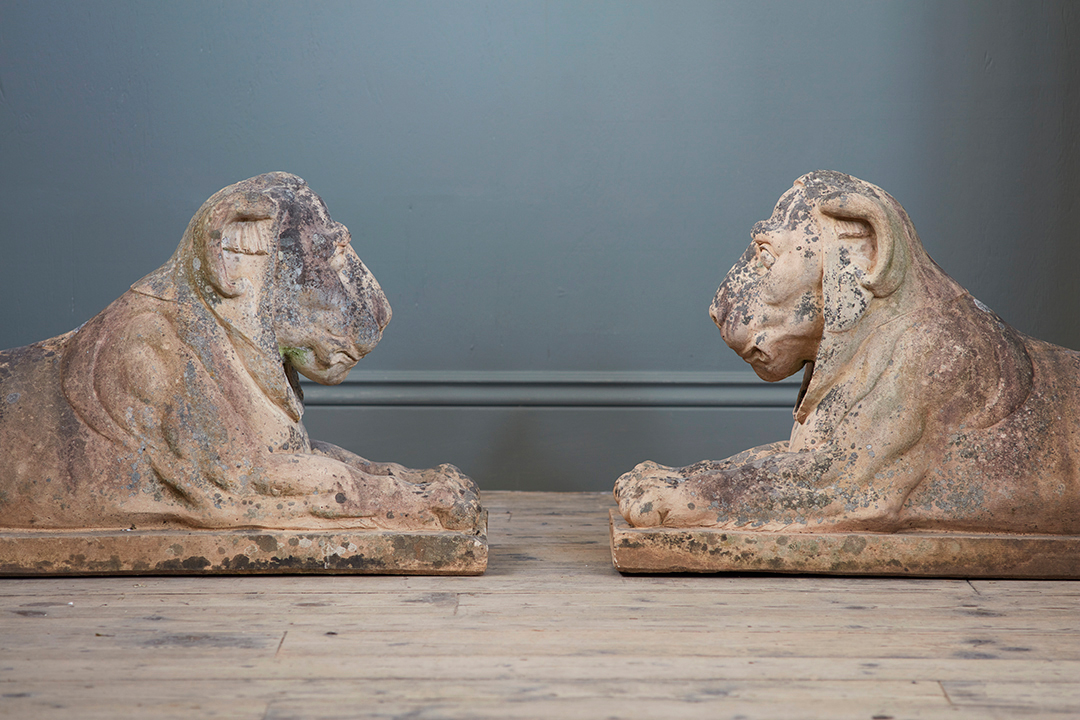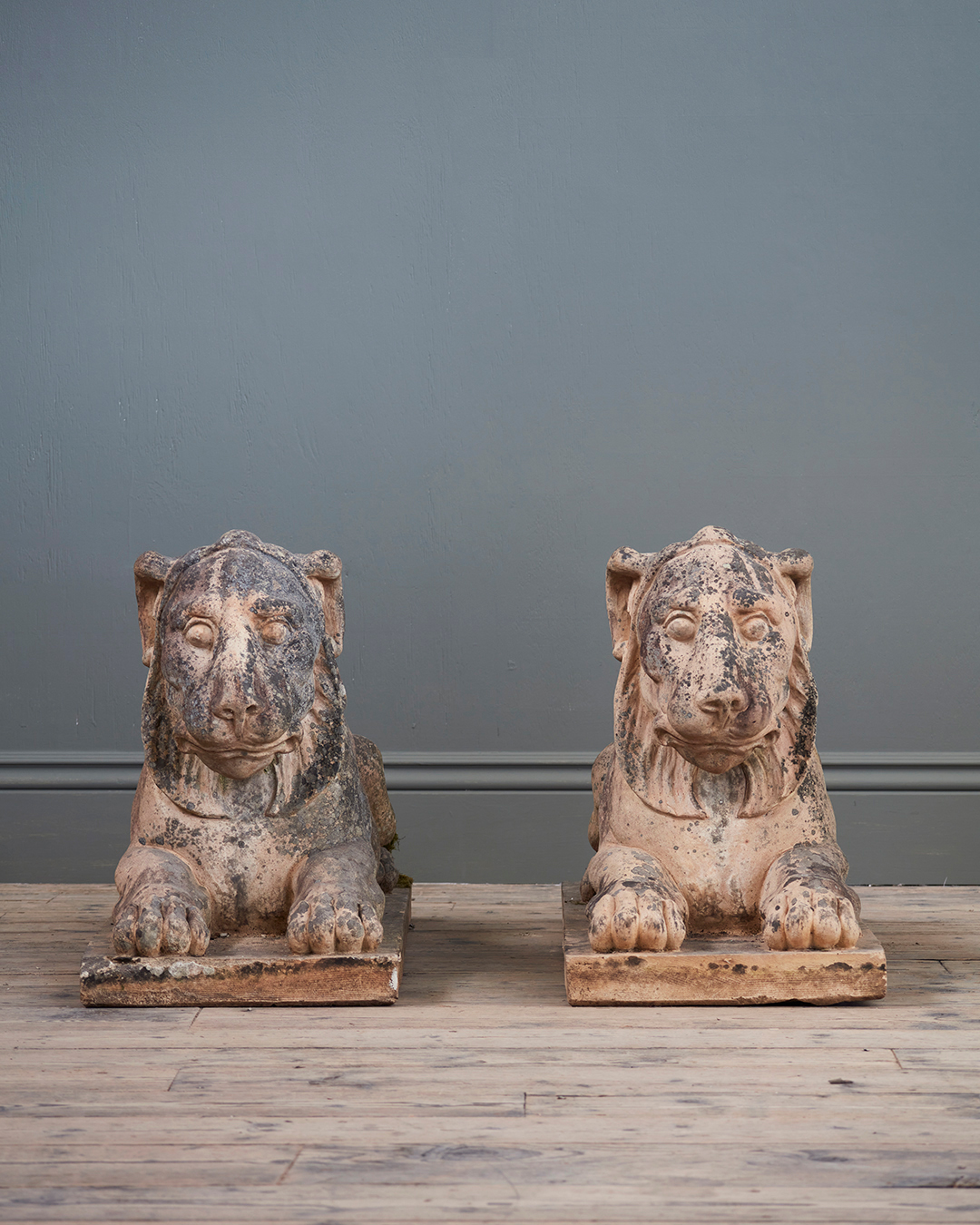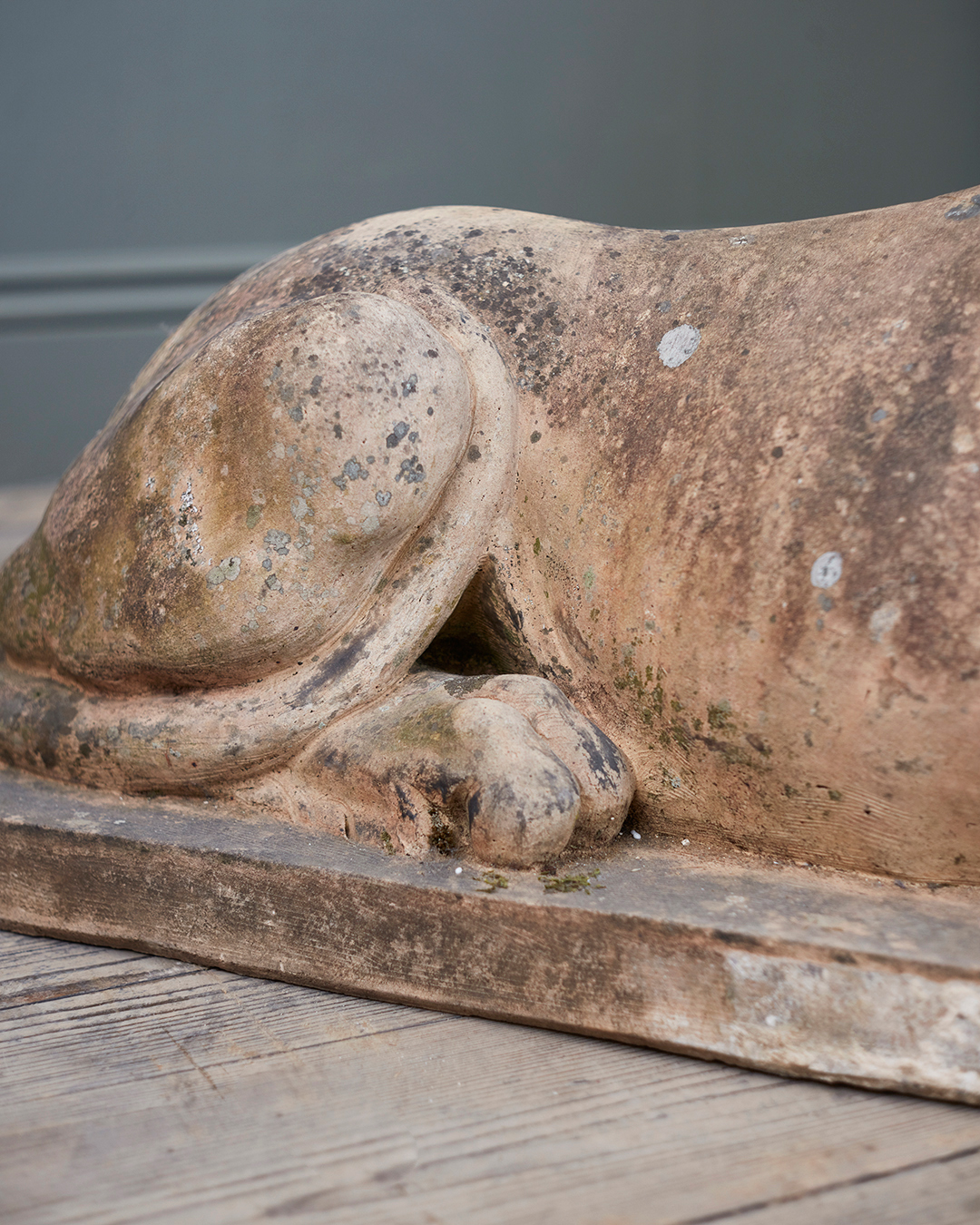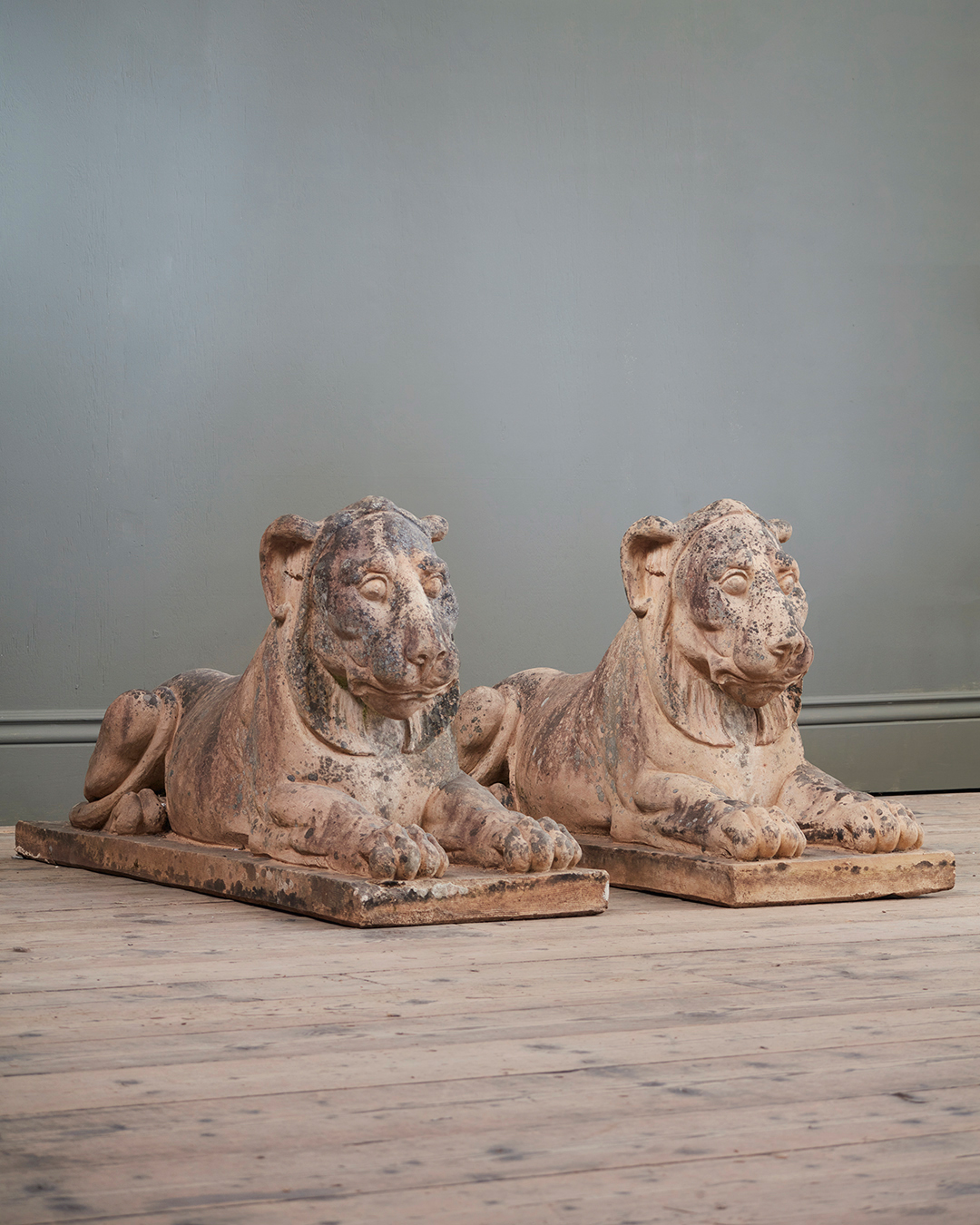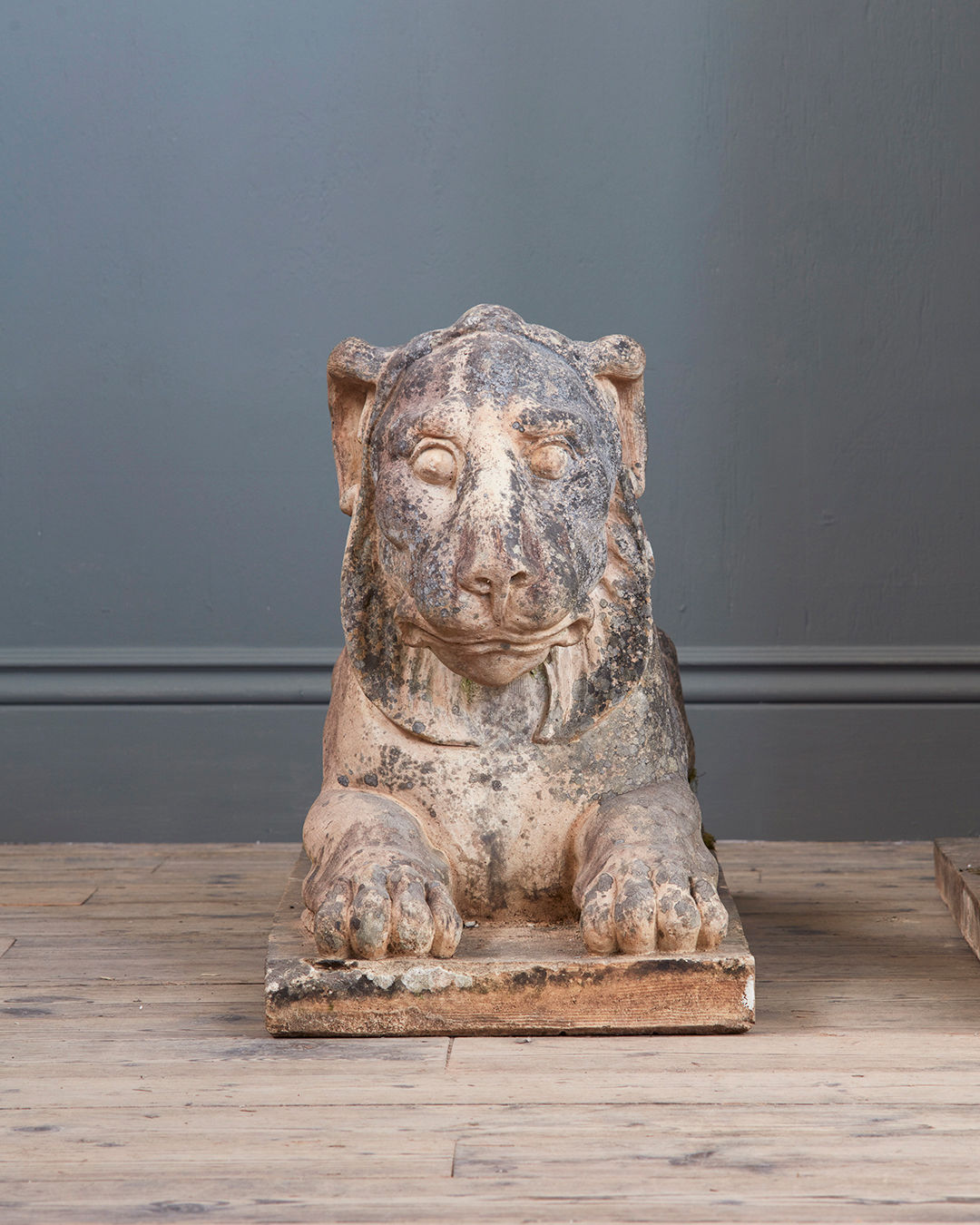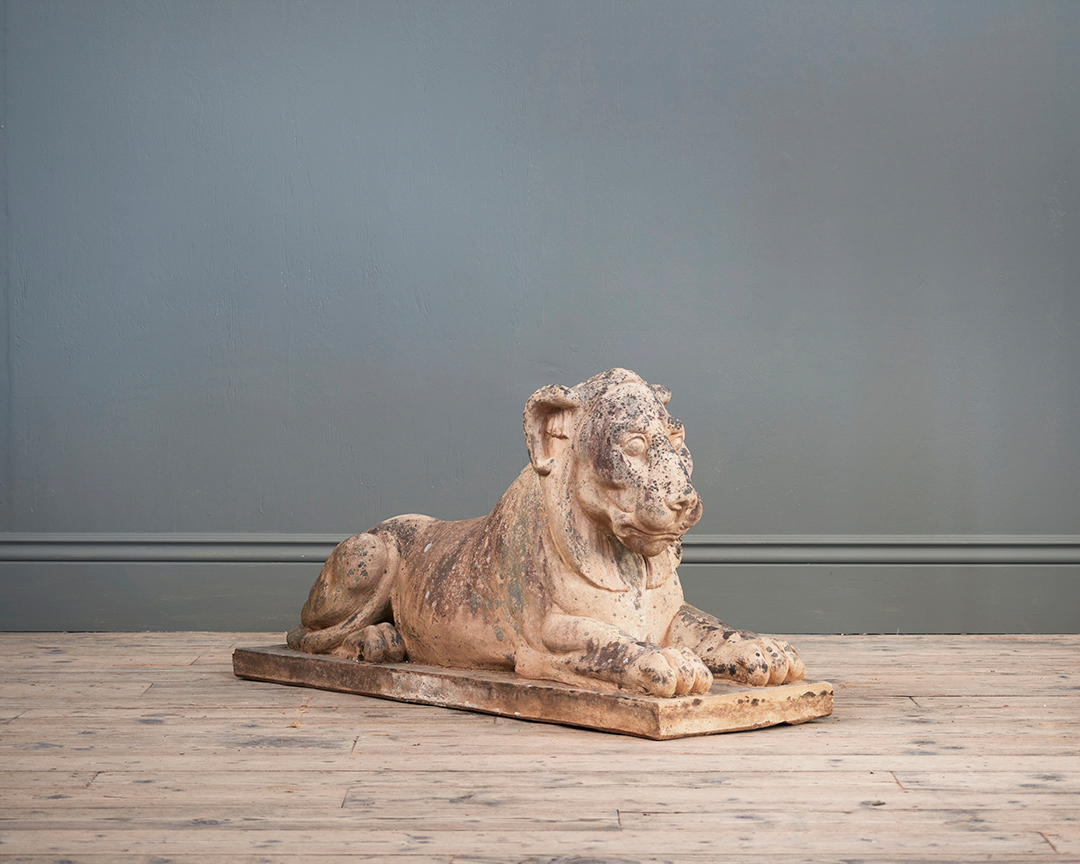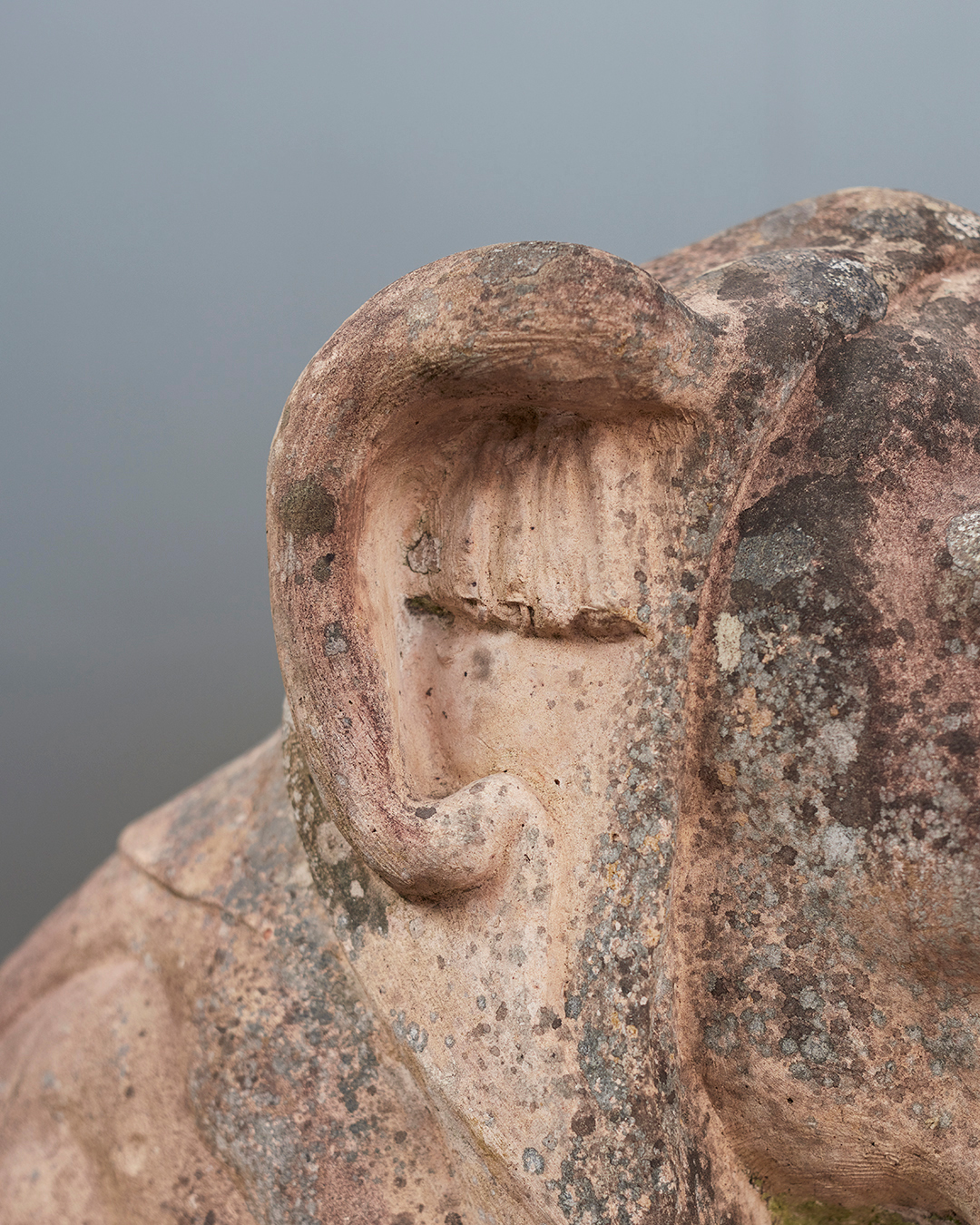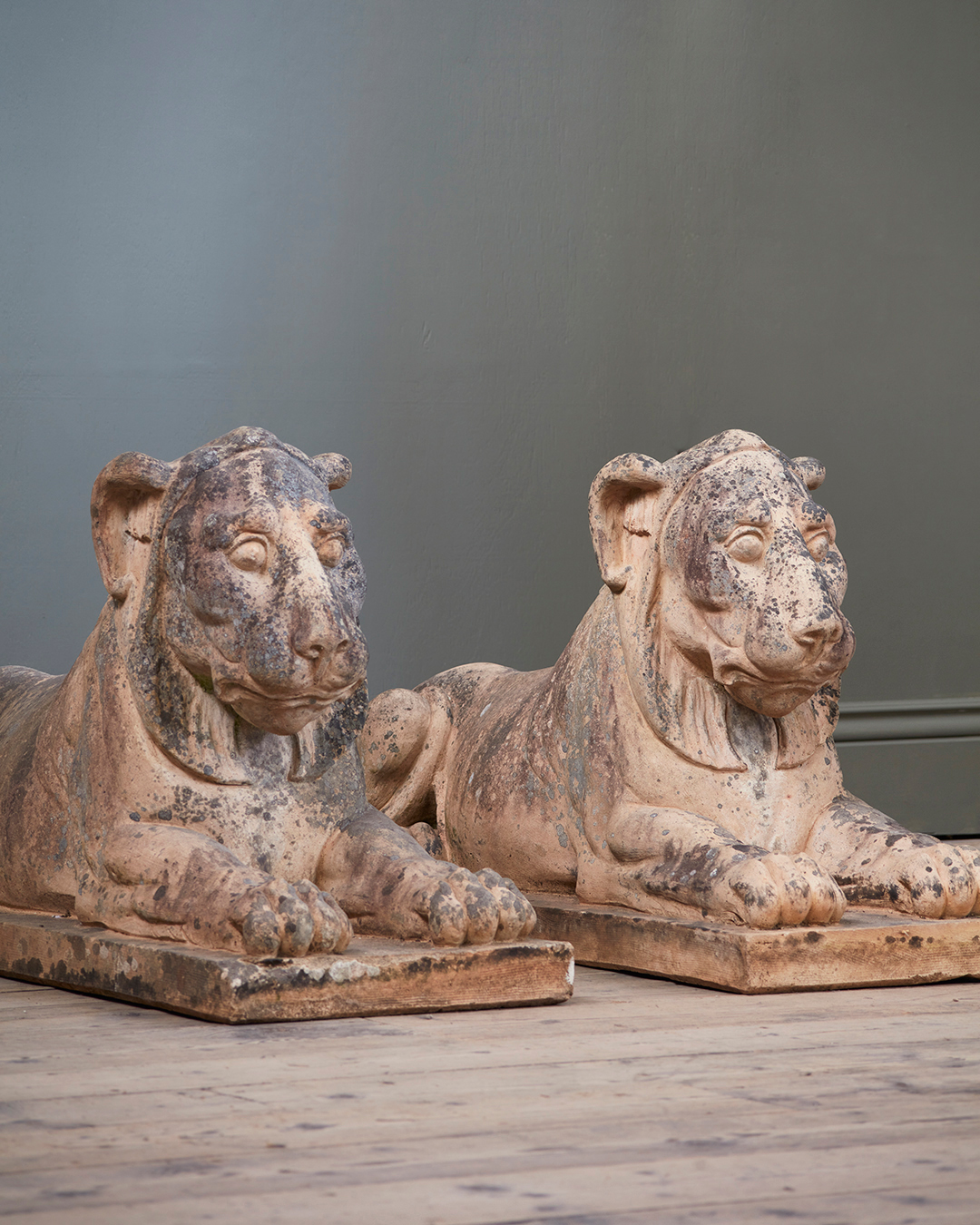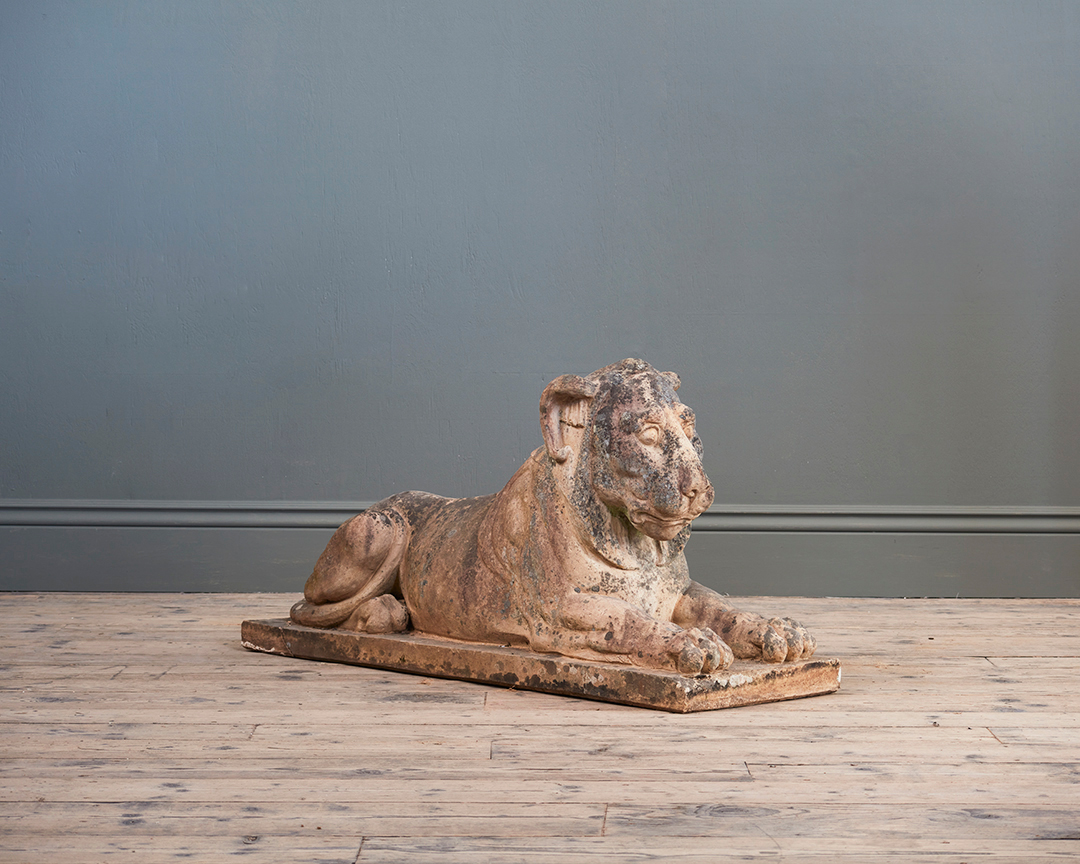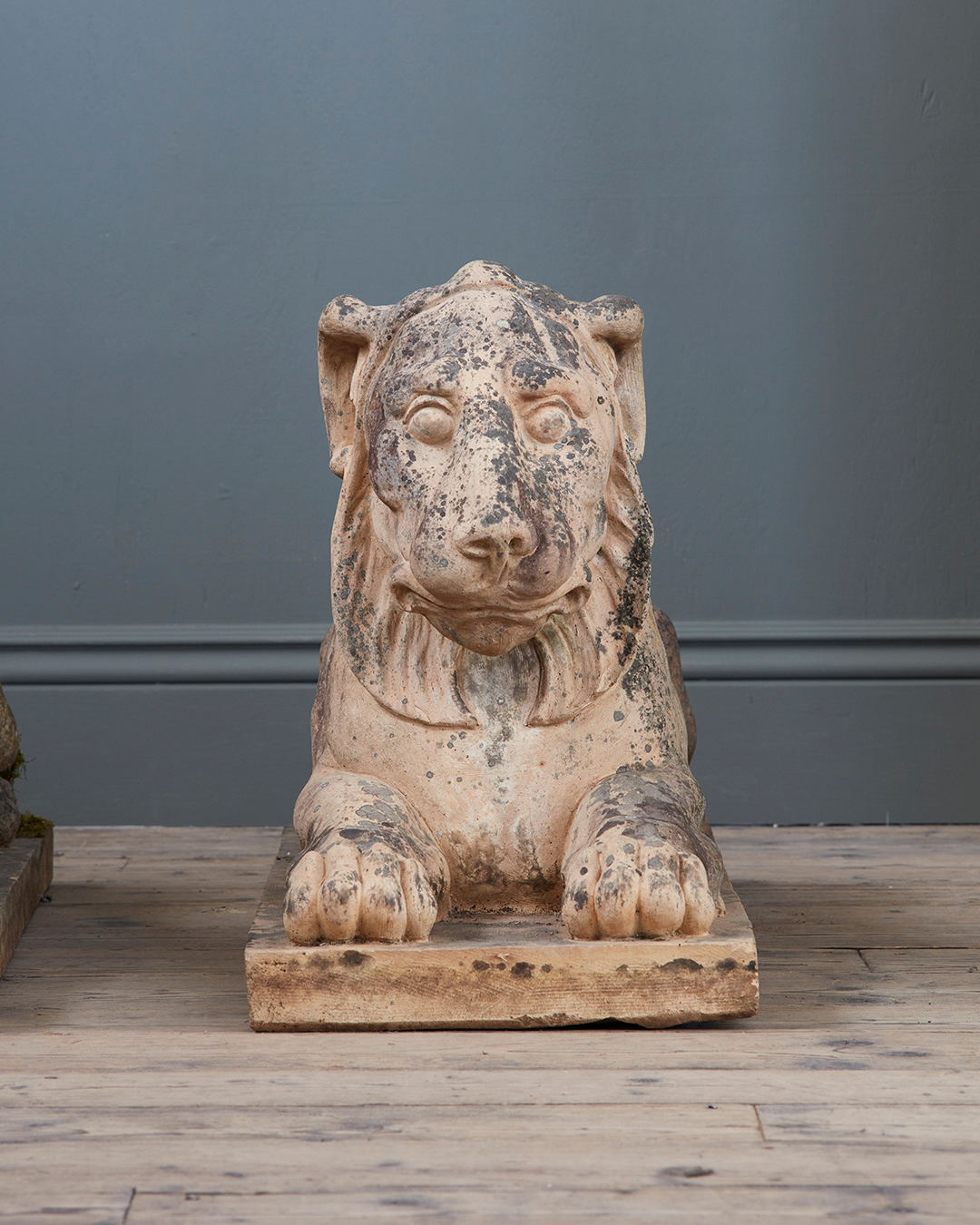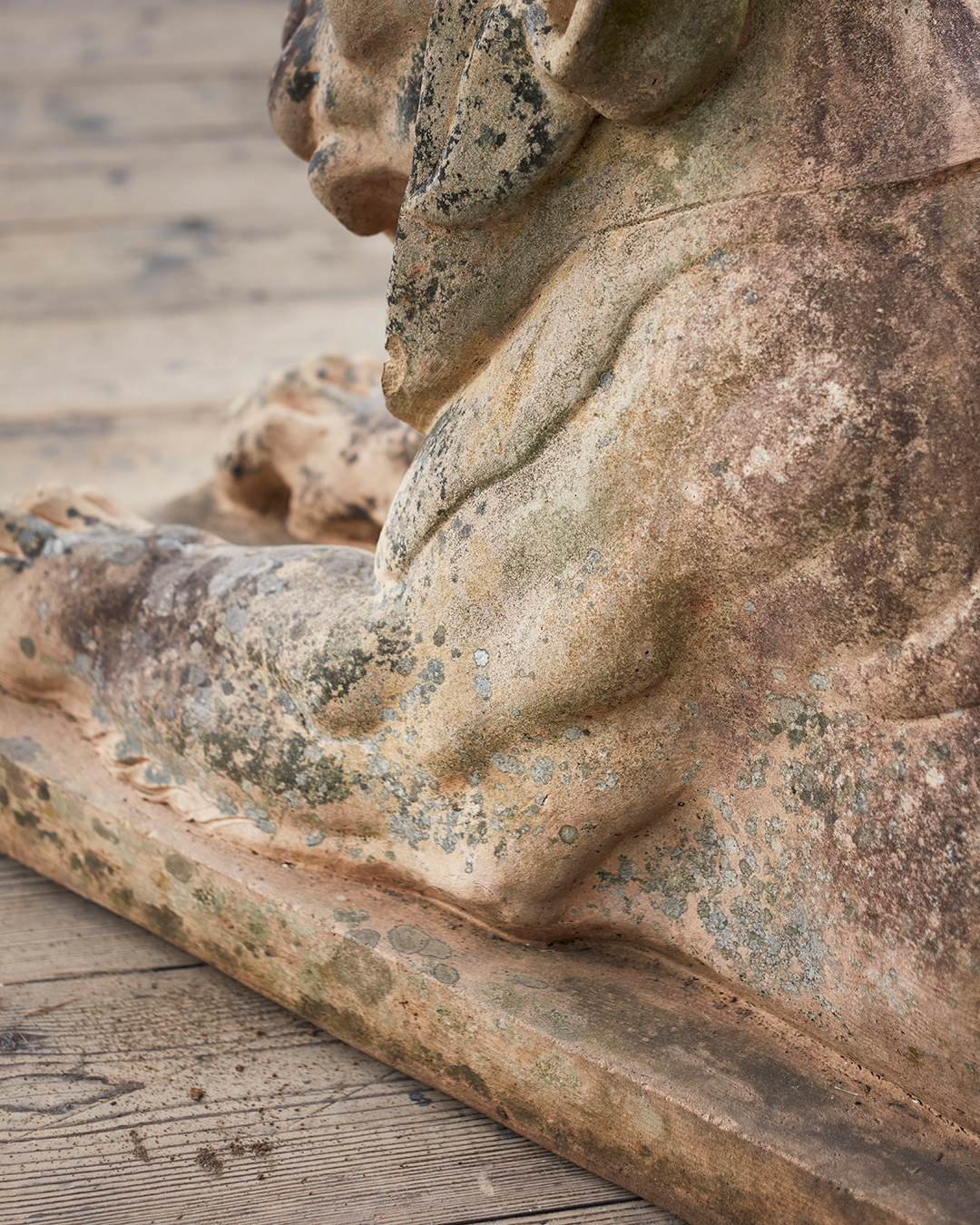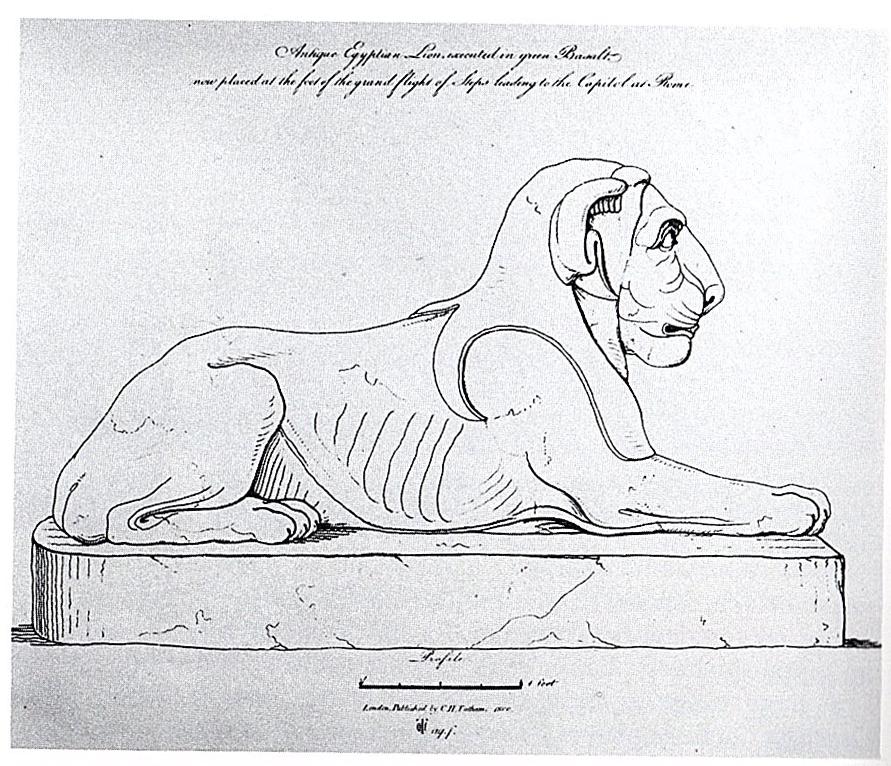A Late 19th Century Pair of Terracotta Recumbant Lionesses, after designs by Coade
Of handsomely moulded form, after the 18th Century designs by the Coade Factory, Lambeth. Their muscular shaping, carefully controlled contours, and overscale characteristics, exude a graceful strength and monumental quiet, of these powerful female big cats. Each on a moulded rectangular plinth, unsigned, and with a gentle patina and spirit of age, with a ‘sleepy’ and pleasantly worn surface.
This quintessential recumbant pose and design was first utilised in the 1780’s by Eleanor Coade, after the antique basalt Egyptian lionesses, which lie at the base of the Scalinata on the Campidoglio, Rome. Mrs. Coade’s etching for it, entitled “Egyptian Lioness”, is dated to the 1770’s-80’s, illustrated in A. Kelly, Mrs. Coade’s Stone, Reading, 1990, p. 263. Charles Heathcote Tatham illustrated one of the lionesses in his influential Etchings, Representing the Best Examples of Ancient Ornamental Architecture; Drawn from the Originals in Rome, and Other Parts of Italy During the Years 1794, 1795, and 1796, London, 1799. Robert Adam employed these sculptural designs for Culzean Castle, Scotland, and single original Coade piece (commissioned by Thomas Hope for Deepdene House & Gardens) was very recently sold at Christie’s London, Philip Hewat-Jaboor: An Eye For The Magnificent, 8 Feb 2024, lot 186.
Height: 62cm, 24 1/2″
Width: 122cm, 48″
Depth: 41cm, 15 1/4″
£40,000


